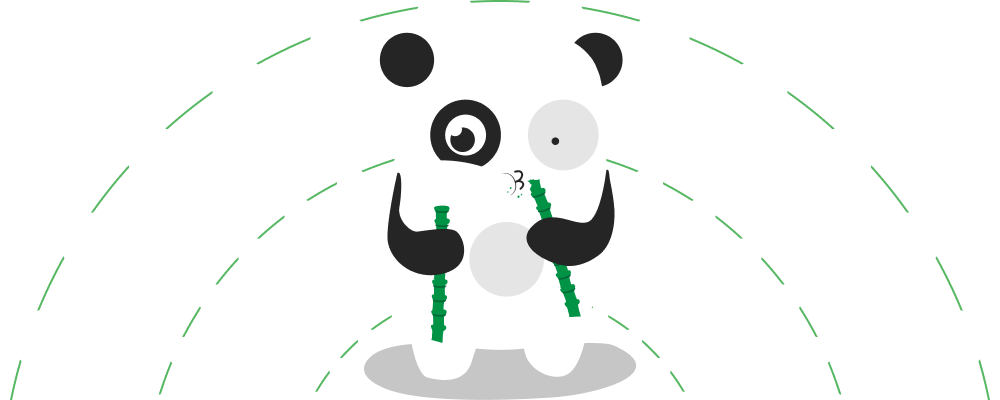Welcome to our new interesting world facts trivia!
In this trivia challenge, we have 20 interesting facts & myths – some are much harder to identify than others, but they are surely interesting enough to mention to your friends and family. From animals to geography, this trivia covers many topics related to our planet. In it, you will get to decide if the interesting trivia listed here is true or false. Get ready to exercise your brain and learn new facts. 😎
Trivia • World Facts Trivia
1. Owning only one guinea pig is prohibited in Switzerland.
TRUE
FALSE
2. Australia is wider than the moon.
TRUE
FALSE
3. Avocados are considered vegetables.
TRUE
FALSE
4. The Eiffel tower becomes taller in summertime.
TRUE
FALSE
5. Dolphins can hold their breath longer than sloths.
TRUE
FALSE
6. You can't possibly hum while you are pinching your nose.
TRUE
FALSE
7. All dogs have a unique nose-print like humans' fingerprints.
TRUE
FALSE
8. Even though giraffes are taller, they are less likely to get hit by lightning than humans.
TRUE
FALSE
9. Mercury is the only planet that spins clockwise.
TRUE
FALSE
10. The sun is two-times bigger than the moon.
TRUE
FALSE
11. The Spanish national anthem has no lyrics.
TRUE
FALSE
12. Identical twins have the exact same fingerprints.
TRUE
FALSE
13. Egypt has more pyramids than any country in the world.
TRUE
FALSE
14. A blue whale's hearbeat can be detected up to 2 miles away.
TRUE
FALSE
15. The correct term for the dash symbole '-' is octothorpe.
TRUE
FALSE
16. The Caesar salad was invented in the 1920s.
TRUE
FALSE
17. Salvador Dalí is the designer of the Chupa Chups logo.
TRUE
FALSE
18. Octopuses blood color is yellow.
TRUE
FALSE
19. The smallest bone in the human body can be found in the feet.
TRUE
FALSE
20. Not a single number before 1,000 contains the letter 'A' in its spelling.
TRUE
FALSE
Anyone can write on Bored Panda. Start writing!
Follow Bored Panda on Google News!
Follow us on Flipboard.com/@boredpanda!

Hi, I’m a writer here at Bored Panda. When I’m not writing, you can find me reading books, binge-watching TV shows, making pottery and jewelry, or cooking. I love good food and good company. I also love my dog and cat who bring me so much joy every day.
Read less »
Selin Atalay
Author, BoredPanda staff
Hi, I’m a writer here at Bored Panda. When I’m not writing, you can find me reading books, binge-watching TV shows, making pottery and jewelry, or cooking. I love good food and good company. I also love my dog and cat who bring me so much joy every day.
Me too! I also think people in Floriduh would like to have a talk with the giraffes and lightning bolts.
Load More Replies...In Englsh, the first number to have an 'a' is 'one hundred and one'. In American English, it is 'one thousand'.
does 'å' count 😅 then 'två' (2). Otherwise 'fyra' (4)
Load More Replies...This comment is hidden. Click here to view.
Wrong. 101 is one hundred one. One hundred AND one is 100.1, a hundred and a tenth. And is use explicitly and only to indicate a decimal. [ https://math.libretexts.org/Courses/Honolulu_Community_College/Math_75X%3A_Introduction_to_Mathematical_Reasoning_(Kearns)/03%3A_More_Types_of_Fractions-_Decimals_Percents_Ratios_and_Rates/3.00%3A_Introduction_to_Decimals-_Place_Value_and_Reading ]
This comment is hidden. Click here to view.
The point is - no pun intended - to avoid ambiguity. Whether "one hundred and one" or "one hundred point one", they both audibly have a decimal, while "one hundred one" does not. Those who ignorantly say "one hundred and one" for 101 are causing ambiguity and problems.
The Yanks are allowed their own dialects, you know. But it's not as bad as Guess Undheit suggests: the rule linked to gives "One hundred and one tenth" as the way to say "100.1" or "one hundred one and one tenth" for 101.1. Perfectly straightforward and easy enough for a speaker of "proper" English to understand, if a bit daft to my mind.
Those who say "one hundred and one" for 101 are speaking unambiguously correct UK English which leads to no problems for any of us. As far as I can tell, no-one says "one hundred and one" to mean "one hundred point one". See these two links: https://www.bbc.co.uk/learningenglish/course/intermediate/unit-25/session-1 and https://math.libretexts.org/Courses/Honolulu_Community_College/Math_75X%3A_Introduction_to_Mathematical_Reasoning_(Kearns)/03%3A_More_Types_of_Fractions-_Decimals_Percents_Ratios_and_Rates/3.00%3A_Introduction_to_Decimals-_Place_Value_and_Reading
I am a former scientist and currently a computer programmer who works with statistics regularly. I have worked with people from many different nations. I have used decimal points for many decades and I have never, ever in my life heard of someone saying, "and" to indicate a decimal point. Even the source you cite does not do so, and in fact uses "hundredths" to represent two decimals after a decimal point. WHere the book says '[t]he decimal point is read as “and”,' the book is sloppily saying that you say "and" where the decimal point *is*, but the fact that you are using places after the decimal must be indicated by "tenths." Anyone who thinks Disney should have named their movie about murdering puppies for coats, "One Hundred One Dalmations" is a very, very silly person, indeed.
All the ignorant whiny know nothings like you say with you knee jerk reactions that you "never say and for a decimal". How exactly do you say £1.23? And just as stupidly, you "think" I'm an inbred yank. I'm not from the UK but had l|mey "parents" and UK education.
There is more to the world than Hawaii. Also, the link you provided doesn't say one hundred and one means 100.1: it says it's 101 is spoken "one hundred one and one tenth". But that's not how it's done in the home of the English language. The correct way to use "and" when speaking large numbers in UK English is explained here: https://www.bbc.co.uk/learningenglish/course/intermediate/unit-25/session-1. In brief, and in the UK: 101 = one hundred and one. 100.1 = one hundred point one. 101.1 = one hundred and one point one.
False. 101 is the first number with the letter A. I would also like to see the study that compares humans and giraffes when it comes to the probability of being struck by a lighting.
Maybe he meant "One hundred and one", which is how some countries say that number.
If the risk is measured as "Fraction of global giraffe population struck by lightning each year" compared to "fraction of global human population struck by lightning each year", it's pretty cut and dried: most humans are under good cover when lighting is on the way.
Me too! I also think people in Floriduh would like to have a talk with the giraffes and lightning bolts.
Load More Replies...In Englsh, the first number to have an 'a' is 'one hundred and one'. In American English, it is 'one thousand'.
does 'å' count 😅 then 'två' (2). Otherwise 'fyra' (4)
Load More Replies...This comment is hidden. Click here to view.
Wrong. 101 is one hundred one. One hundred AND one is 100.1, a hundred and a tenth. And is use explicitly and only to indicate a decimal. [ https://math.libretexts.org/Courses/Honolulu_Community_College/Math_75X%3A_Introduction_to_Mathematical_Reasoning_(Kearns)/03%3A_More_Types_of_Fractions-_Decimals_Percents_Ratios_and_Rates/3.00%3A_Introduction_to_Decimals-_Place_Value_and_Reading ]
This comment is hidden. Click here to view.
The point is - no pun intended - to avoid ambiguity. Whether "one hundred and one" or "one hundred point one", they both audibly have a decimal, while "one hundred one" does not. Those who ignorantly say "one hundred and one" for 101 are causing ambiguity and problems.
The Yanks are allowed their own dialects, you know. But it's not as bad as Guess Undheit suggests: the rule linked to gives "One hundred and one tenth" as the way to say "100.1" or "one hundred one and one tenth" for 101.1. Perfectly straightforward and easy enough for a speaker of "proper" English to understand, if a bit daft to my mind.
Those who say "one hundred and one" for 101 are speaking unambiguously correct UK English which leads to no problems for any of us. As far as I can tell, no-one says "one hundred and one" to mean "one hundred point one". See these two links: https://www.bbc.co.uk/learningenglish/course/intermediate/unit-25/session-1 and https://math.libretexts.org/Courses/Honolulu_Community_College/Math_75X%3A_Introduction_to_Mathematical_Reasoning_(Kearns)/03%3A_More_Types_of_Fractions-_Decimals_Percents_Ratios_and_Rates/3.00%3A_Introduction_to_Decimals-_Place_Value_and_Reading
I am a former scientist and currently a computer programmer who works with statistics regularly. I have worked with people from many different nations. I have used decimal points for many decades and I have never, ever in my life heard of someone saying, "and" to indicate a decimal point. Even the source you cite does not do so, and in fact uses "hundredths" to represent two decimals after a decimal point. WHere the book says '[t]he decimal point is read as “and”,' the book is sloppily saying that you say "and" where the decimal point *is*, but the fact that you are using places after the decimal must be indicated by "tenths." Anyone who thinks Disney should have named their movie about murdering puppies for coats, "One Hundred One Dalmations" is a very, very silly person, indeed.
All the ignorant whiny know nothings like you say with you knee jerk reactions that you "never say and for a decimal". How exactly do you say £1.23? And just as stupidly, you "think" I'm an inbred yank. I'm not from the UK but had l|mey "parents" and UK education.
There is more to the world than Hawaii. Also, the link you provided doesn't say one hundred and one means 100.1: it says it's 101 is spoken "one hundred one and one tenth". But that's not how it's done in the home of the English language. The correct way to use "and" when speaking large numbers in UK English is explained here: https://www.bbc.co.uk/learningenglish/course/intermediate/unit-25/session-1. In brief, and in the UK: 101 = one hundred and one. 100.1 = one hundred point one. 101.1 = one hundred and one point one.
False. 101 is the first number with the letter A. I would also like to see the study that compares humans and giraffes when it comes to the probability of being struck by a lighting.
Maybe he meant "One hundred and one", which is how some countries say that number.
If the risk is measured as "Fraction of global giraffe population struck by lightning each year" compared to "fraction of global human population struck by lightning each year", it's pretty cut and dried: most humans are under good cover when lighting is on the way.

 Dark Mode
Dark Mode 

 No fees, cancel anytime
No fees, cancel anytime 


































































35
49